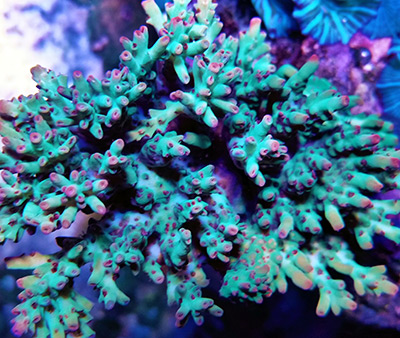
Top down shot of Acropora microlados
Welcome to the next level of coral care. By now I am assuming you have at least understood all the key general practices to maintain some of the hardier corals, from soft corals to large-polyp stony (LPS) corals to some of the more rugged small-polyp stony (SPS) corals. Each category of livestock can be classified into various requirements for the piece of ocean environment you are trying to simulate. Oftentimes we tend to generalize that all parts of the ocean are the same, but as you become educated about the livestock you are trying to maintain, you will understand that there is no single recipe to make everything thrive and flourish in the same tank.
Review time
So let us review some of the key attributes we, as responsible hobbyists and nature fans, must familiarize ourselves with in order to provide a sustainable environment. The most common aquarium parameters are the following:
1. Tank dimensions: Volume (amount of salt water for stability) Depth (impacts light penetration and available environmental zones) Size (impacts aquascaping, flow, lighting choices, growth)
2. Lighting Type: metal halide, T5, LED, or hybrids Spectrum (10,000 to 20,000 Kelvin) Intensity (lux) Photosynthetically Active Radiation (PAR) Photosynthetically Usable Radiation (PUR) Photoperiod (hours)
3. MORE









0 Comments